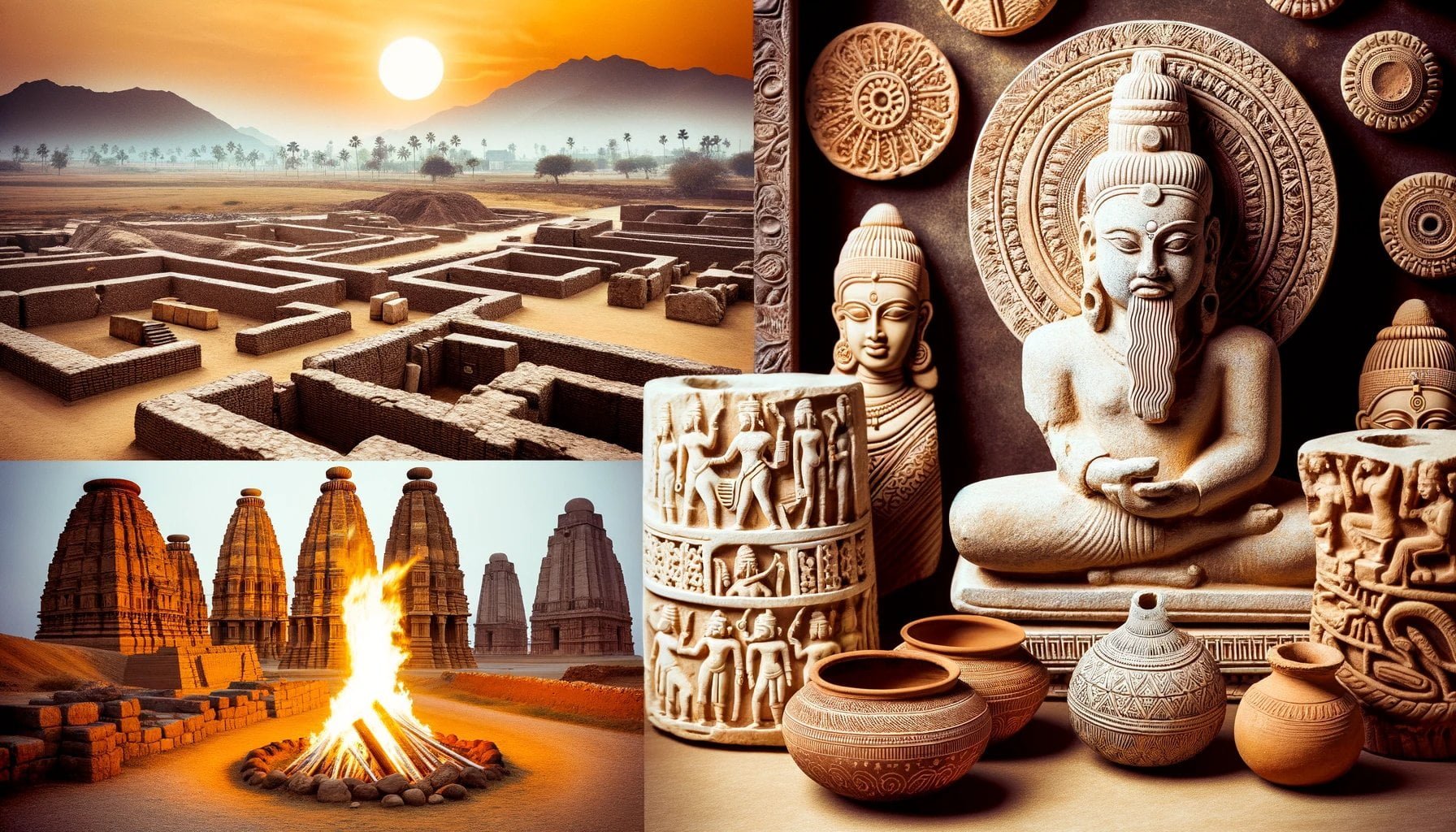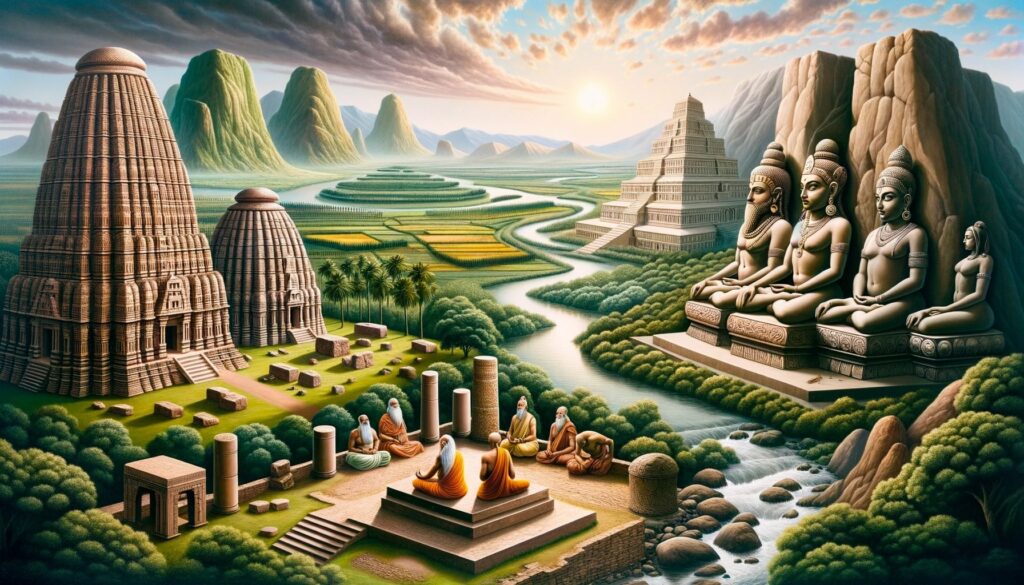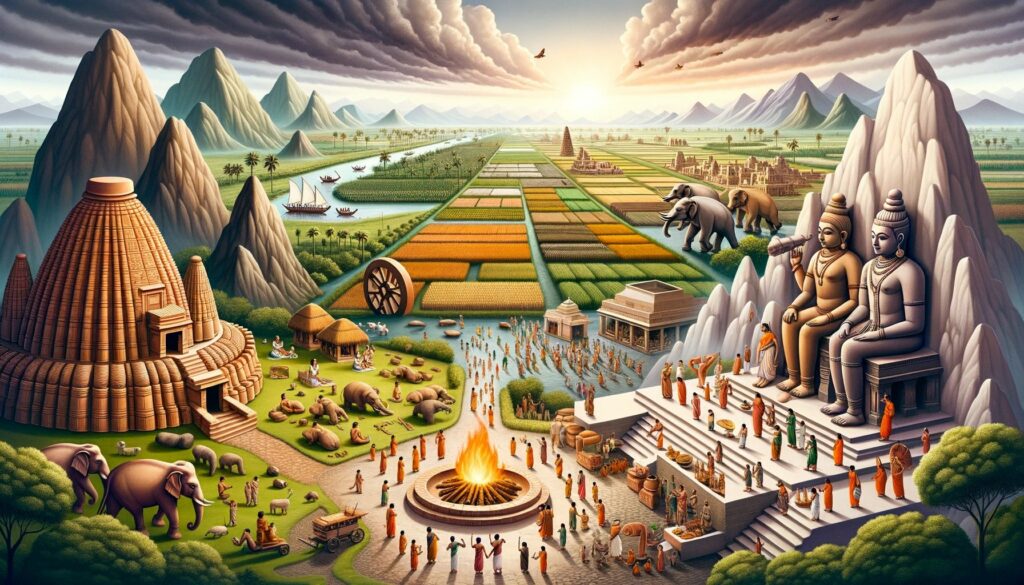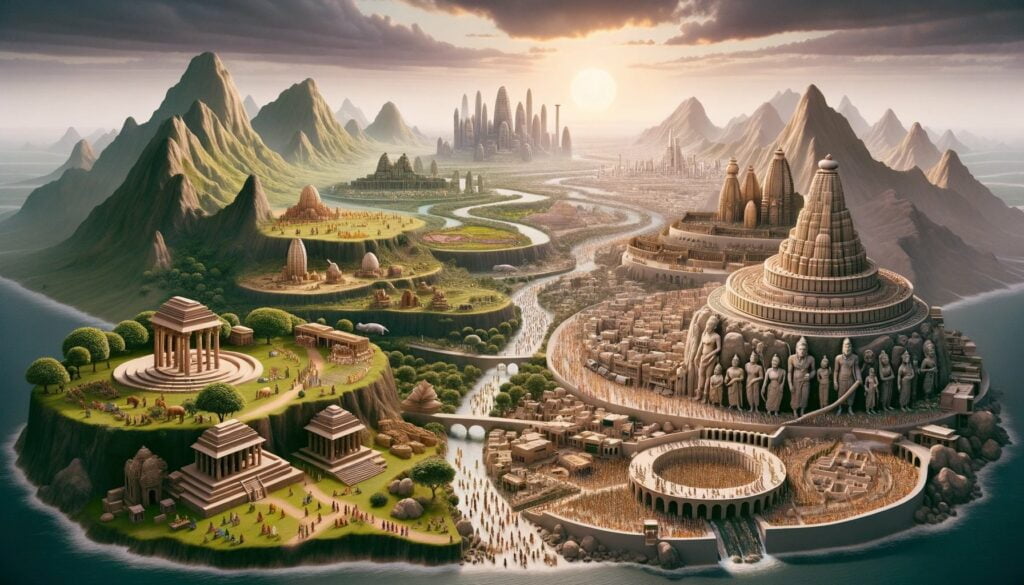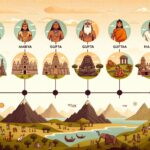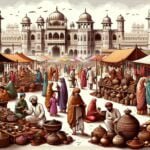India, with its rich and diverse history, is home to three prominent civilizations that have left an indelible mark on South Asian heritage. These civilizations, spanning centuries and encompassing various regions within the Indian subcontinent, offer a fascinating glimpse into the complexity and dynamism of India’s cultural landscape. From the Indus Valley Civilization, known for its advanced urban planning, to the Vedic civilization, which gave birth to Hinduism, and the Mauryan Empire, known for its political and administrative prowess, each of these civilizations has contributed immensely to shaping the cultural fabric of India. In this article, we will delve into the intricacies of these three civilizations and explore their enduring legacies.
What are the 3 civilizations in India?
India, a land rich in history and cultural heritage, has been home to three prominent civilizations that have shaped the country’s identity. These three civilizations are the Indus Valley civilization, the Vedic period, and the Mughal empire. In this article, we will explore these civilizations and their significance in South Asian history.
The Indus Valley Civilization: A Glimpse into Ancient India
The Indus Valley civilization, also known as the Harappan civilization, is one of the oldest urban cultures in the Indian subcontinent. This ancient civilization originated in the fertile Indus River valley and thrived from around 2500 BCE to 1900 BCE. The Indus Valley people were advanced in various aspects, including architecture, urban planning, and trade.
One of the remarkable achievements of the Indus Valley civilization was their sophisticated urban planning. They built well-organized cities with grid-like street layouts, advanced drainage systems, and even public baths. These technological advancements highlight the ingenuity and foresight of the ancient Indians.
Furthermore, the Indus Valley civilization had a vibrant trade network, engaging in long-distance trade with Mesopotamia. This exchange of goods and ideas played a crucial role in shaping early Indian civilization and establishing cultural connections with other regions.
The Vedic Period: The Foundation of Hinduism
Following the decline of the Indus Valley civilization, the Vedic period emerged and lasted until the 5th century BCE. This period is named after the Vedas, the sacred texts of Hinduism, which were composed during this time. The Vedic period laid the foundation for the major religious and cultural practices that continue to shape India to this day.
During the Vedic period, ancient Indian society underwent significant transformations. The Indo-Aryans, who migrated to the Indian subcontinent, brought with them their traditions, rituals, and languages, which eventually evolved into Sanskrit. The Rigveda, the oldest of the four Vedas, provides valuable insights into the religious beliefs and social institutions of this time.
The emergence of early Hinduism as the dominant religion of India can be traced back to the Vedic period. The Vedic texts contain hymns, rituals, and philosophical discussions that form the basis of Hindu theology. This period witnessed the development of complex rituals, class divisions, and the beginnings of caste-based social structures.
The Mughal Empire: Medieval India in its Golden Age
The Mughal dynasty, led by formidable rulers such as Akbar, Shah Jahan, and Aurangzeb, marked a significant period in the history of medieval India. The Mughals, who hailed from Central Asia, established a vast empire that encompassed a substantial portion of the Indian subcontinent.
The Mughal empire, known for its territorial conquests, brought political stability, cultural richness, and architectural splendor to India. The Mughal rulers promoted religious tolerance, leading to a flourishing of diverse artistic and intellectual traditions.
One of the most iconic legacies of the Mughal empire is its architecture, exemplified by the Taj Mahal, a magnificent mausoleum in Agra. This architectural marvel showcases the fusion of Persian, Islamic, and Indian design elements, reflecting the cultural syncretism that defined the Mughal era.
Conclusion
In conclusion, the three civilizations in India – the Indus Valley civilization, the Vedic period, and the Mughal empire – have left an indelible mark on the country’s history, culture, and civilization. From the early advancements of the Indus Valley civilization to the religious and social developments of the Vedic period, and ultimately the cultural renaissance of the Mughal empire, these civilizations have shaped India’s identity and continue to inspire and awe people around the world.
Ancient Indian civilization is a fascinating topic that continues to captivate historians and enthusiasts alike. The rich cultural heritage and advancements achieved by this ancient civilization are truly awe-inspiring. From the remarkable urban planning in cities like Mohenjo-daro to the development of intricate art forms such as yoga and Ayurveda, ancient India had a profound impact on the world.
If you are eager to delve deeper into the wonders of ancient Indian civilization, click here to explore further. This link will provide you with a comprehensive understanding of the historical significance, societal structures, and major achievements of this extraordinary ancient civilization. Prepare to be amazed as you uncover the hidden gems of ancient India and witness the legacy that continues to influence our world today.
The Maurya Empire
The Maurya Empire was a powerful ancient empire in India that existed from 321 to 185 BCE. It was a significant civilization that left a lasting impact on Indian history and culture. Let’s dive into the fascinating details of this extraordinary empire.
Rise of the Maurya Empire
Chandragupta Maurya: The Maurya Empire was founded by Chandragupta Maurya, a remarkable leader who embarked on an aggressive expansion policy. He defeated Seleucus I Nicator, a satrap of Alexander the Great, and acquired his territory. This victory marked the start of the Maurya Empire’s dominance over most of the Indian region.
Megasthenes and “Indica”: During the reign of Chandragupta, the Mauryan court welcomed Greek ambassador Megasthenes, who wrote a book called “Indica.” This valuable book provides us with important insights into the Mauryan Empire’s administration, culture, and society.
Administration and Military Power
Centralized Administration: The Mauryan Empire boasted a centralized administration, which contributed to its efficient governance. The capital city, Pataliputra, was a grand city that served as the nerve center of the empire.
Diplomatic Relations: Despite being an Indian empire, the Mauryan Empire maintained regular diplomatic relations with Greek-speaking kingdoms in the west. This contact with the Western world allowed for a cross-cultural exchange of ideas and goods.
Powerful Military: The Mauryan Empire’s military prowess was instrumental in its expansion and maintenance of its vast territories. Chandragupta Maurya built a formidable army, and the empire’s military strength provided stability and security within its borders.
Economic Prosperity
Agricultural Wealth: Agriculture was the backbone of the Mauryan Empire’s economy. The fertile lands of central and northern India supported a thriving agricultural sector that ensured the empire’s prosperity. Grain production was essential for feeding the growing population and supporting trade.
Trade and Commerce: The empire’s geographic location in central and northern India was advantageous for trade. The Mauryan Empire actively engaged in commercial activities, facilitating the exchange of goods with neighboring regions, including modern-day Iran.
Ashoka the Great and Buddhist Influence
Ashoka’s Conversion: The Mauryan Empire witnessed a significant turning point with the reign of Ashoka the Great, one of its most renowned emperors. After a phase of violence and conquest, Ashoka embraced Buddhism and promoted non-violence and social welfare policies.
Impact of Ashoka’s Rule: Ashoka’s conversion to Buddhism had a profound impact on the empire. He promoted values such as tolerance, compassion, and equality. Ashoka’s edicts, inscribed on pillars and rocks across his empire, spread his message and provided insights into his governance.
The Decline of the Mauryan Empire
Shunga Empire: The Mauryan Empire eventually declined in 185 BCE. The last Mauryan emperor, Brihadratha, was killed by Pushyamitra Shunga, a Mauryan general who founded the Shunga Empire. The collapse of the Mauryan Empire marked the end of an era that reshaped Indian history.
Conclusion
The Maurya Empire’s achievements and legacy remain significant in Indian history. From Chandragupta Maurya’s remarkable conquests to Ashoka the Great’s transformative rule, the empire’s historical and cultural contributions continue to shape South Asian heritage. The Mauryan Empire’s centralized administration, military power, economic prosperity, and embrace of Buddhism all play a role in understanding this fascinating civilization. The Maurya Empire’s rise and fall serve as a testament to the complex historical dynamics that have shaped India’s rich and diverse heritage.
Comparisons and Contrasts between the Three Civilizations
When exploring the three prominent civilizations in India, namely the Indus Valley civilizations, Aryans, and Dravidians, it is fascinating to compare and contrast their geography, culture, and economies. Each civilization developed in different regions of the Indian subcontinent and had unique characteristics that contributed to their growth and development.
Geography
The geography played a crucial role in shaping the three civilizations. The Indus Valley civilizations, centered around the cities of Harappa and Mohenjo-Daro, thrived in the fertile plains of the Indus River. This location provided abundant water for agriculture and facilitated long-distance trade through rivers and ports.
On the other hand, the Aryans settled in the northwestern region of the Indian subcontinent, known as the Punjab. This area was characterized by vast grasslands and semi-arid conditions. The Aryans adapted to this environment and developed a nomadic pastoral economy based on cattle herding.
The Dravidians, who inhabited the southern part of India, had a diverse geographical landscape. They lived in the Deccan Plateau, which consisted of arid regions, dense forests, and fertile alluvial plains along the coastal areas. This diversity influenced the Dravidians’ agricultural practices and trade networks.
Culture
Despite their geographical differences, there were aspects of culture that were shared among the three civilizations. For instance, all three civilizations had written communication systems, which played a crucial role in trade, governance, and the development of thought.
However, there were also distinct cultural differences among the civilizations. The Indus Valley civilizations were known for their well-planned cities with advanced urban infrastructure. They developed a system of standardized weights and measures, indicating a centralized authority. The presence of seals suggests a complex bureaucracy and trade networks.
The Aryans, with their nomadic pastoral lifestyle, had a less hierarchical social structure compared to the Indus Valley civilizations. Their society was organized into tribal assemblies called “sabhas” and “samitis”. They composed hymns and texts known as the Vedas, which formed the foundation of Hindu religious and philosophical traditions.
The Dravidians had a rich and diverse cultural heritage that included classical dances, music, and literature. They developed sophisticated temple architecture and their own language family, which influenced the linguistic landscape of the Indian subcontinent.
Economies
The economies of the three civilizations also differed. The Indus Valley civilizations were engaged in long-distance trade with regions as far as Mesopotamia. They had a well-developed network of trade routes and were known for their craftsmanship in products such as pottery and textiles.
The Aryans relied primarily on a pastoral economy, with cattle being the primary measure of wealth. They practiced subsistence agriculture and supplemented their livelihood through hunting and gathering. The Aryans also engaged in trade, especially in the export of horses.
The Dravidians had a diversified economy that included agriculture, fishing, and maritime trade. They were skilled in the cultivation of crops such as rice and spices, which were highly valued commodities in ancient trade networks.
Comparing and Learning from Diversity
Comparing these early civilizations allows us to appreciate their rich diversity and the different approaches they took to overcome challenges. By examining their similarities and differences in geography, culture, and economies, we gain insights into the factors that contributed to their rise and fall.
Just as the Indus Valley civilizations, Aryans, and Dravidians thrived through trade, war, and exploration, we can observe the same patterns in other civilizations around the world. By studying civilizations such as the Inca, the Aztec, and the ancient civilizations in India, Rome, and China, we can understand the contributions they made and the reasons for their rise and fall.
In conclusion, exploring the comparisons and contrasts between the three civilizations in India sheds light on the diverse history and heritage of South Asia. By appreciating their unique geographical, cultural, and economic characteristics, we gain a deeper understanding of the complexities that shaped these civilizations. Let us continue to learn from our past to build a better future.
FAQ
What are the three civilizations in India?
The three prominent civilizations in India are the Mauryan Empire, the Indus Valley civilizations (Harappa and Mohenjo-Daro), and the cultures of the Aryans and the Dravidians.
How were these civilizations similar and different in terms of geography, culture, and economies?
The Indus Valley civilizations, including Harappa and Mohenjo-Daro, had advanced urban planning, a system of writing, and a flourishing trade network. The Aryans, who migrated to the region later, had a pastoral economy and their cultural practices shaped aspects of Hinduism. The Dravidians, native to South India, had distinct languages and cultural traditions. The Mauryan Empire, in contrast, was a centralized state with a powerful military and a prosperous agrarian economy.
What were some key aspects to explore when comparing these civilizations?
When comparing these civilizations, it is important to examine their trade networks, writing systems, religious practices, farming techniques, and technological inventions. These aspects provide insights into the diversity of these civilizations and their approaches to overcoming challenges.
How does comparing early civilizations help in understanding their diversity?
Comparing early civilizations helps in understanding their diversity by highlighting the different approaches they took to overcome challenges. By studying their unique characteristics, we can gain a deeper appreciation for the variety of human achievements and innovations across different time periods and regions.
How does comparing the civilizations of India, Rome, China, the Inca, and the Aztec contribute to our understanding of their rise and fall?
Comparing the civilizations of India, Rome, China, the Inca, and the Aztec allows us to understand their contributions and the reasons for their rise and fall. By examining their trade, warfare, and exploration, we can gain insights into the factors that enabled these civilizations to expand and endure, as well as the challenges that led to their eventual decline.
